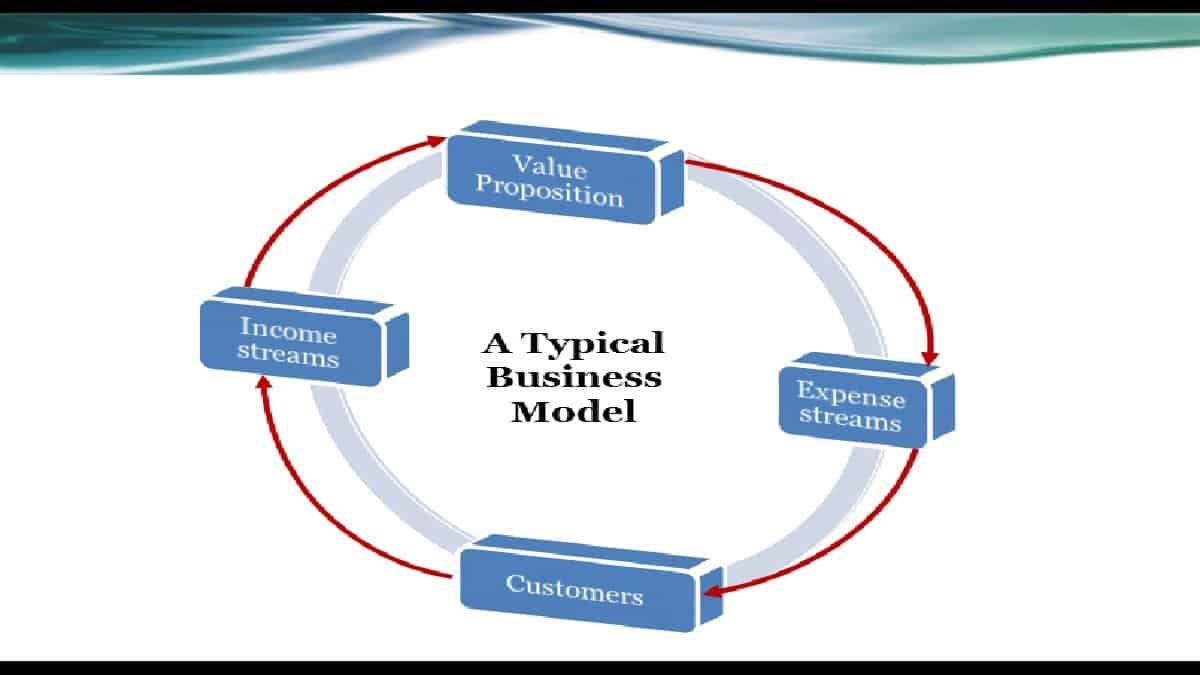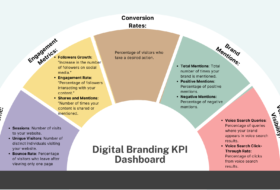Statistics have it that about 90% of new startups and small businesses fail. A lot of reasons have been attributed to this, some of which include: finance, incompetence, personal problems, etc. One major reason that has been neglected by business analysts is ‘choosing the wrong business model’.
From my experience as a business developer and my interactions with owners of failed businesses, I’ve come to understand that many small businesses fail because they chose the wrong business model.
What is a business model?
A business model is a framework on which the survivability, growth, and sustainability of a business are based. It can be defined as an internal & external architecture of a business. This business architecture can be used to design, plan, execute, and manage changes in the business. It is simply a plan on how a business would create value; generate revenue, while minimizing costs.
All these grammar simply tells us that a business model is your business blueprint. This blueprint depicts your business value proposition, sources of revenue and expenditure streams.

In practice, a good business model must answer the following questions:
- Who is the customer? A business that has no customer is already dead.
- What does the customer value? Every business must be solving a valuable problem. If customers do not value your solution, they won’t pay for them.
- How does the money come to the business? If your business keeps spending money without generating income, it will die one day. Answering this question is as important as the value proposition. The better the value, the more eager a customer will be willing to pay. Hence, it is paramount to determine and understand how to generate income for the business.
- How can the business deliver value to customers at an appropriate cost? Every business should understand and determine how it will deliver value to the customers and the costs associated with it.
Different Business Models for Small Businesses
There are different business models, each model suitable for a particular kind of business. But there are business models that can be applied to all kinds of businesses. In this article, we shall discuss 3 of such business models, namely: Business Reference Model (BRM), OGSM and Business Model Canvas (BMC).
Business Reference Model (BRM)
BRM is a comprehensive business model. It applies to all sizes of business organizations ranging from small businesses to large businesses. Also, businesses could have multiple lines of business and exist in any industry.
This model can be extended across organizational boundaries to include vendors, partners, and customers. It is also customizable to accurately represent the business functions within an organization.
The BRM describes a business model in five (5) perspectives, namely: the environment, value proposition, operating model, risk and compliance.
Structure of Business Reference Model (BRM)
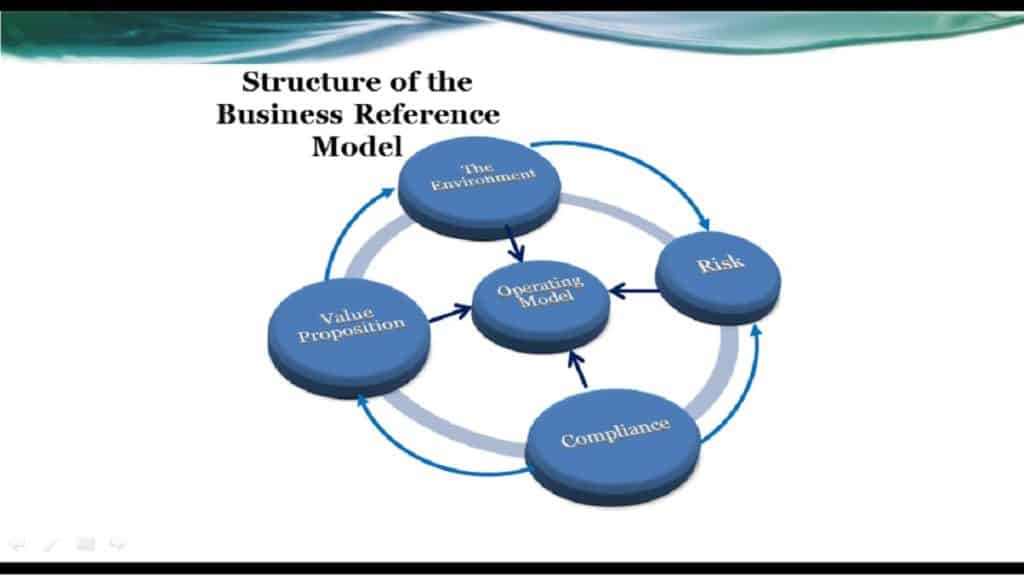
Let us explain briefly each component in the above structure.
The Environment
The environment or business environment addresses the setting within which a business must operate. This component describes the external factors that are important for the survivability and growth of the business.
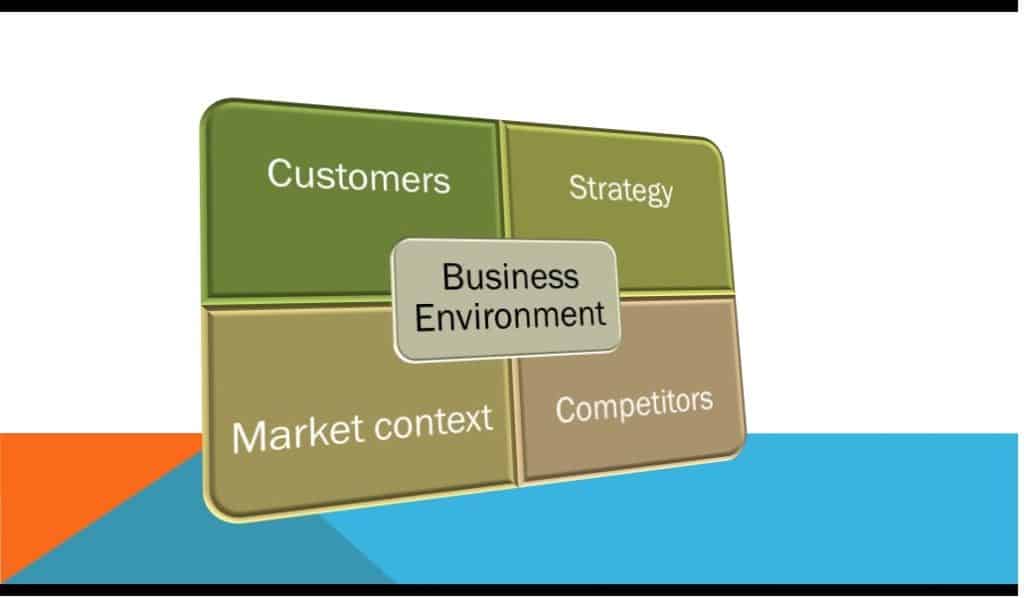
Whether it is a small business or large organization, some of these factors include:
- competitors
- market context
- customers
- strategy
The environment defines the business’ sources of revenue and expenditure and the overall strategy for market positioning. It describes why a business should undertake a particular course of action.
Every business must understand its operating environment. The goal of understanding the business environment is to create a solid structure that will promote the value proposition. Good knowledge of the environment will help in structuring the other four perspectives: Value Proposition, Operating Model, and Risk.
Small businesses will face the challenge of gaining and exploiting insights about the market, competition, and customer base. This understanding will help the business to position itself optimally in the environment.
For example, can your business identify a set of strategic weaknesses among competitors in the environment? This will uniquely position your business to deliver new solutions that address the unmet customer needs.
Value Proposition
The Value Proposition perspective describes the offering of the business in terms of products, services, brand, and shareholder value. What solution is the business bringing to the table? This perspective cuts across two factors:
- customers (products, services, brand), and
- shareholders
A business can bring a solution to the customers’ needs through products, services, and brand development. In spite of how well the business delivers the above to her customers, the shareholders’ value cannot be neglected.

The importance of value lies in the compensation expected from it. Small businesses usually get compensation for the value they deliver in monetary terms. This economic value comes from the stakeholders and customers for the value delivered to each factor.
The goal of understanding the value proposition is that it defines the customer experience and sets shareholder expectations. The value proposition also provides a baseline set of needs that need to be fulfilled by the Operating Model perspective.
The challenge for any small business here is to develop a value proposition that can attract a suitable customer base. The value should effectively fulfill the needs of the customer, and generate sufficient benefits to satisfy shareholders’ expectations. All this needs to be achieved in a way that is consistent with and reinforces, brand image and brand values.
The Operating Model
The Operating Model perspective describes the resources at the disposal of the business to generate the value proposition. This perspective is intended to describe how an organization will be able to deliver on its value proposition. The operating model is built around six (6) factors:
- capabilities
- value chain
- governance
- partners & ecosystem
- finance
- assets
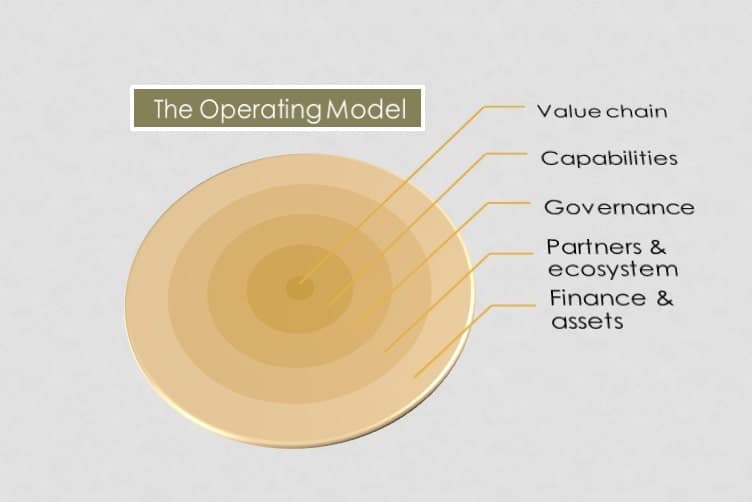
This perspective puts together everything owned by the business to deliver the value proposition. In particular, capabilities are the core enablers to operate the business from the perspectives of people, process, technology, and information.
The goal of the operating model is to allow business executives to evaluate the business through a wide variety of viewpoints. This will enable them to identify desired and enhanced states of the business.
The challenge for small businesses is to identify the correct alignment of resources that will deliver the necessary customer and shareholder experience.
The Risk Perspective
Every business has an associated risk. The Risk perspective identifies the uncertainties that may surround the business in its delivery of the value proposition. It is intended to describe the threats that face a business from within and without.
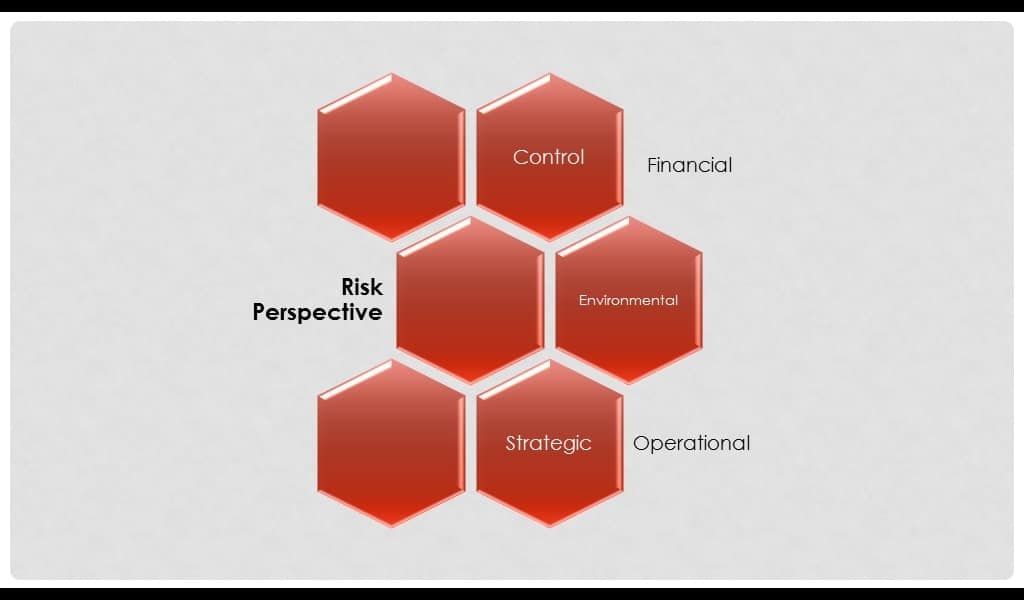
A small business may encounter financial and operational risks when delivering her value proposition. Financial risk is not limited to losing the entire capital but could include loss of assets and reputation. Other risks include strategic risk which may affect the growth of the business and risk of control.
Typically, small businesses may model their business around the known, repeatable aspects of business operations. However, within a complex and volatile environment, unforeseen circumstances frequently occur in ways that may be extremely damaging to the business.
The goal of risk analysis is to gain a full understanding of potential scenarios that may adversely impact the business. It also helps business executives to prepare appropriately to address those risks if they occur.
The Compliance Perspective
The final perspective in this business model is compliance. Compliance represents activities a business must carry out to assure that value is delivered using an acceptable standard of business practice. Factors within this perspective describe the constraints imposed on businesses to ensure acceptable standards are met.
When delivering a value proposition, businesses execute their operating model. While doing this, it is necessary to ensure that businesses do not act in negative, destructive, or inappropriate ways. Compliance may involve any or all of the following, depending on the size of business:
- social responsibility
- commercial
- legal & regulatory
- quality, and
- safety
In some cases, compliance can offer opportunities for small businesses to differentiate if they are the first to access new markets or by being compliant with the new legislation.
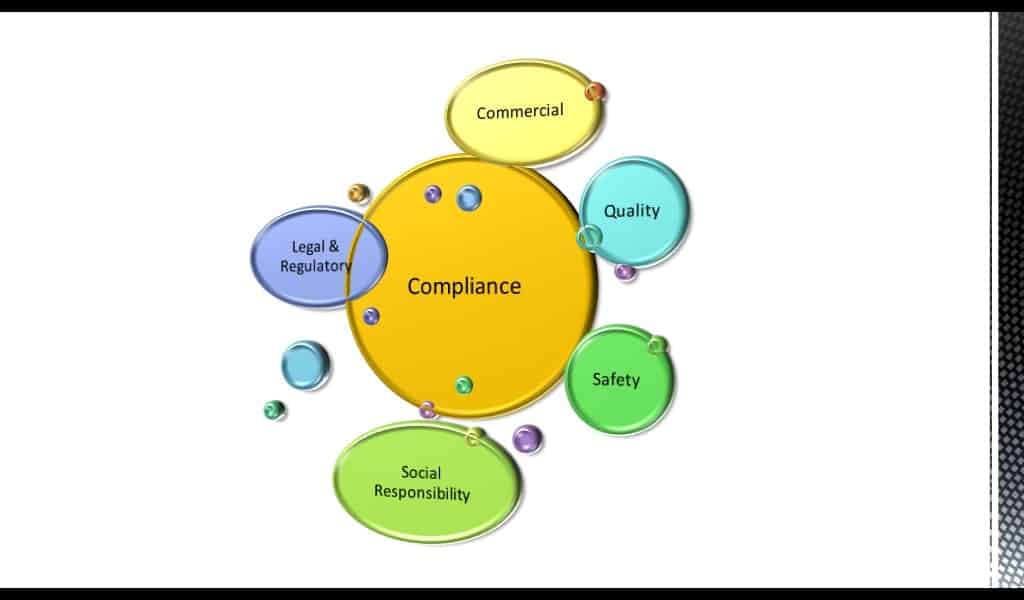
The Compliance perspective acts similarly to the Environment perspective in the following ways:
- it influences value proposition, operating model, and risk perspectives
- it constrains all activities of the business to comply with standards of acceptability.
As a small business, the goal of the compliance perspective in BRM is to:
- adequately understand the compliance requirements that exist
- ensure that appropriate mechanisms are put in place to ensure they are met.
Summary
From the foregoing discussion, you can attest that the BRM business model is comprehensive. It can be applied in any business no matter the size. The goal here is to select the relevant factors within each perspective and create a plan suitable for the business.
The OGSM Business Model
OGSM means Objectives, Goals, Strategies, and Measures. OGSM is a world-class business model that transforms objectives, goals, strategies, and measures into actionable and executable plans.

The OGSM model is a business-planning framework. It helps small businesses, especially, to link long term visions and strategies to short and medium-term goals, actions and measures.
In our post on ‘How to set Breakthrough goals in 2020 and beyond’, we discussed how to set SMART goals. Similarly, the OGSM puts together what a business needs to achieve and how to achieve them. It helps small businesses to monitor progress towards those goals, and maintain focus along the way.
Let’s look at the components of the OGSM business model.
Objectives
Objectives are statements of purpose that set short-term (3 – 5 years) direction for the businesses and organizations. This statement describes clearly and concisely the ambition of a business. It should answer the question: What does your business want to achieve and how?
An objective is a constant and meaningful reminder to business about what success looks like in the future. An effective objective statement is a customized, business-specific view of where the business is headed.
Take a look at the following business objectives:
- to become leading consultants in tourism and entertainment through a partnership with world tourist centers.
- to create a world-class entertainment platform that will be the hub of students and business owners
- to build brand loyalty among customers within the West African sub-region, thereby competing effectively with international brands
Your business objective tells you where your business is headed shortly. It is the purpose you will be fulfilling in the course delivering your value proposition.
Goals
Goals state out in quantitative terms what the business wants to achieve in the next 3 – 5 years. Goals breakdown the objectives in measurable terms and they must be SMART (Specific, Measurable, Attainable, Relevant and Time-bound).
Goals answer the question: what does the business want to achieve critical targets and terms? For example, the first objective above can be broken down into 3 goals as follow:
- To build a world-class gazette of tourist centers in the world in the next 8 months.
- To build an interactive, friendly and accessible website in 12 months
- To process and complete partnership with 30 tourist centers in Europe, Asia, and Africa in 18 months
The goals are created to align with the broad objective of the business. Each goal creates a value that takes your business closer to achieving its broad objective.
Strategies
After the business has established its objectives and goals, the next step is to outline how it will achieve them. These ‘how’ are the strategies. Start-ups should aim at identifying three to five strategies that will ensure the required objectives and goals are reached.
Strategies are implemented through initiatives and structured work plans. For example, based on the above objective, strategies could be:
- Building experience and a competent team with a creative and innovative mindset. A team that is capable of communicating, interacting and using cutting edge technology to achieve set targets
- Establishing an IT department with experienced IT staff that would deploy robust web apps and maintain them
- Establishing a communication team that would identify, contact and maintain a relationship with tourist centers around the world.
Measures
This simply defines how you measure progress based on your defined strategies. Measures are numbers that define an organization’s progress toward delivering a strategy.
Each strategy should have three measures that define whether the strategy is effective and have the desired impact. Each measure is tracked to determine the progress of a strategy and used to make decisions regarding any necessary adjustments.
How to Develop an OGSM
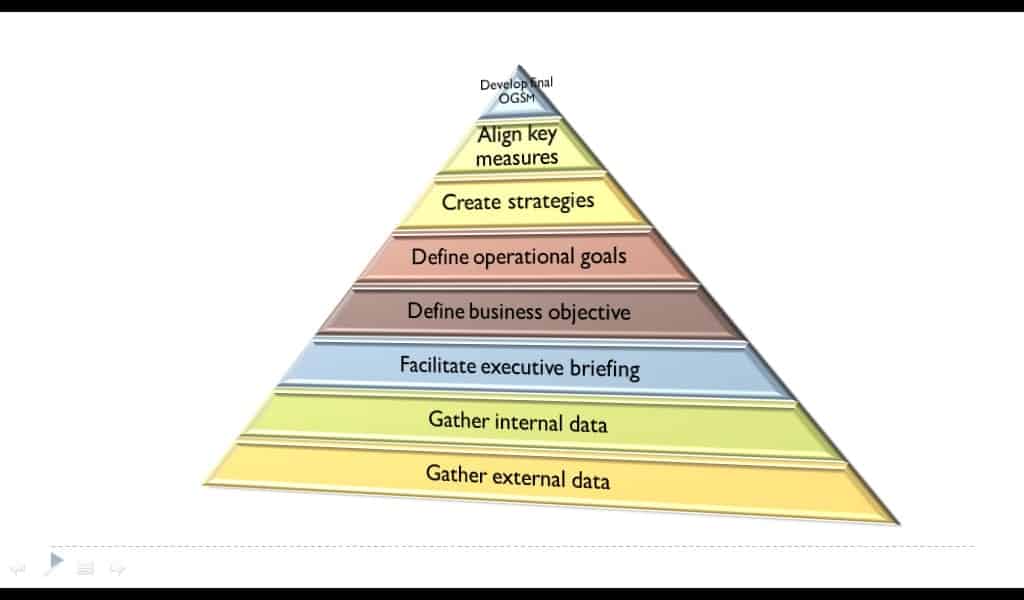
- Gather external data: To put together external data, follow the following process;
- perform market and customer research
- identifying possible trends in (a) above
- identify critical expectations
- pinpoint the
customer needs that are not met.
- Gather
internal data: With
the external data at your disposal, gather internal data. This involves the
following:
- interviewing management and leadership team to diagnose opportunities within categories like growth, productivity, and people.
- identify areas of growth, productivity, and improvement to meet expectations
- implement measures to meet unmet customer needs
- report handy and clear information on what is working well and areas of improvement.
- Facilitate an executive overview and debriefing session: This involves a review and analysis of information gathered. At this point, businesses should determine trends, prospects, and opportunities for business growth and expansion. This assesses a business current state and determines where it is going.
- Define the objective statement. This will set the direction for the business in the next 3 – 5 years.
- Define the operational goals. This will quantitatively align the business objectives to operational goals and realistic targets.
- Create strategic platforms. This will critically put in place measures of evaluating the success and failure of the business.
- Align key measures to strategies. Determine milestones and metrics to determine the success or track progress.
- Develop a final OGSM.
- Gather
internal data: With
the external data at your disposal, gather internal data. This involves the
following:
Business Model Canvas (BMC)
The last and most implemented business model we shall discuss is the BMC. The Business Model Canvas was proposed by Alexander Osterwalder based on his earlier book: Business Model Ontology. It outlines several prescriptions that form the building blocks for business activities.
The BMC is mostly used because of its simplicity and usage. It enables both new and existing businesses to focus on operational as well as strategic management and marketing plans.
The BMC is a one-page overview that lays out both what you do (or want to do), and how you go about doing it. It enables structured conversations around management and strategy by laying out the crucial activities and challenges involved with your initiative and how they relate to each other.
The BMC Structure
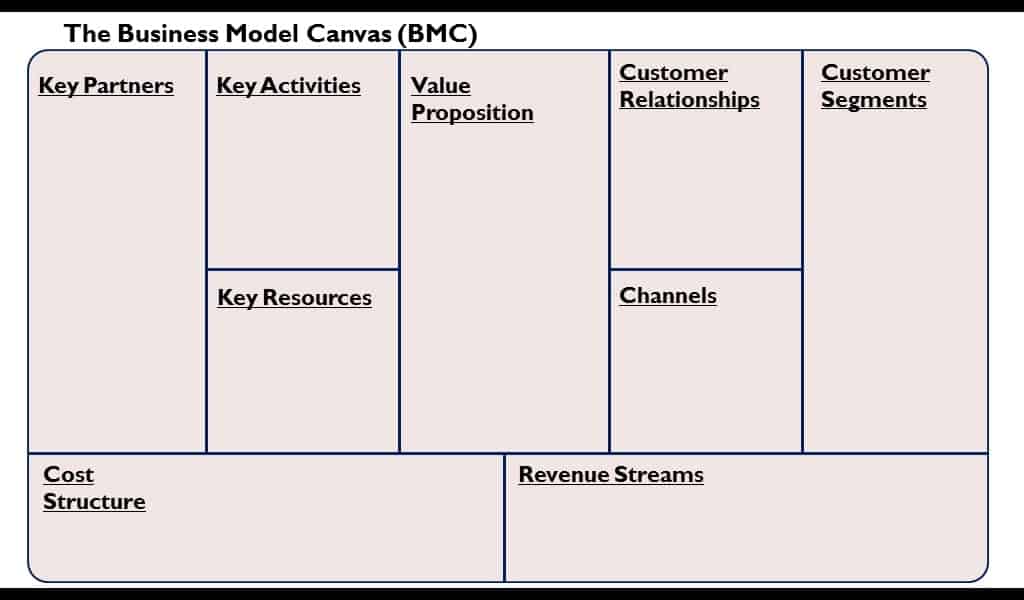
The BMC has nine (9) major components:
Customer Segments
This component looks at the reason for the existence of the business. Here, you need to identify if the business has existing and potential customers. Typical questions to ask are:
- Who are my customers?
- Which classes of people are my creating values for?
- What do they think, do or feel?
If customers exist for your value proposition, then you should divide them into segments. Say, households, students, applicants, teenagers, etc.
Value Propositions
Here, you will define explicitly the solution you are bringing to the table. The reason behind the value proposition may emanate from your environmental research and competition analysis. Salient questions to answer are:
- What core value am I delivering to the customer?
- Which customer needs am I satisfying?
- What valuable problems am I bringing a solution to?
By answering the above questions, you will be able to
- identify the uniqueness of your value proposition
- your area of competitive advantage.
Channels
To receive streams of income and sustain the business, your value proposition will reach the final consumer. Channels describe avenues to promoting and delivering your value propositions to customers. You will need to answer the questions:
- how will I promote the value propositions
- how will I deliver and sell them?
- why should I use the proposed methods?
- are the channels working?
There are different channels to delivering values depending on the kind of value. Popular among them include direct sales, agents, referrals, web platform, etc. Analyze available options and choose the most appropriate ones, considering cost and efficiency.
Customer Relationships
While small businesses strive to bring customers, it is important to implement effective strategies to maintain them. The customer relationship component allows you to choose a suitable way to relate with customers. Try to figure out the answers to the questions:
- How do you interact with customers through their ‘journey’?
- What relationship does your target customer want you to establish?
- How can you integrate that into your business in terms of cost and strategy?
Revenue Streams
Finance is the lifeline of a business. A business without adequate funding will likely die. To sustain your business, you must create avenues through which income can be generated. In most cases, this is through value proposition. When setting revenue streams, try to answer the questions:
- How does the business earn revenue from the value propositions?
- At what value are your customers willing to pay?
- What and how do they pay?
- How will they prefer to pay?
- How much does every revenue stream contribute to the overall revenues?
Key Activities
To deliver your business value, you must perform certain operations. The BRM business model will call it the operating model. These activities can be in terms of production, packaging, extracting, servicing, etc. Try and answer the following questions that will help you create these activities.
- What uniquely strategic things does the business do to deliver its proposition?
- What activities are important the most in distribution channels, customer relationships, revenue streams, customer segments? etc.
Key Resources
In this component, you will answer the questions that relate to creating and delivering value. When choosing resources, customers and compliance perspectives should be put into considerations. Answer the following questions:
- What unique strategic assets must the business have to compete?
- What resources are important the most in creating your value, distribution channels, customer relationships, revenue stream…?
Key Partnerships:
The partnership is important for any small business, especially, in areas you do not have a competitive advantage. If such areas are critical to the success of your business, you can outsource or partner with other businesses. Business model canvas allows you to leverage on the strength of others at an agreed exchange of value.
In the objective above, the business wishes to partner with existing tourist centers around the globe. With this in place, the business will concentrate on getting customers since it has representatives all over the globe.
You will need answers to the following questions:
- what can the business not do so it can focus on its Key Activities?
- what are the motivations for the partnerships?
- which areas are critical to our success but we lack competitive advantage?
Cost Structure:
Every business incurs costs, hence all business models most specify a cost outlay. We incur a cost in purchase and use of assets, we also incur a cost as we run our business daily. Depending on the type of business, costs may be similar, e.g. rent, salary, or specific to a business.
The essence of a business model is to identify business resources, activities, etc and the costs associated with them. To arrive at a cost structure of your business you need to answer some questions. Some of them are:
- what are the business’ major cost drivers?
- how are they linked to revenue?
- which key resources/ activities are the most expensive?
- which channel of distribution costs less?
Summary
The BMC is simple and comprehensive. It fits in any size of business and any type of industry. At a glance, one can tell whether to invest in such a business or not. The Business model canvas is important for the following reasons:
Focus: It helps you to create a business plan succinctly without lengthy grammar and descriptions. Since I started using BMC, I include it in most business plans I write. It’s so simple that I produce it before producing the descriptive plan.
Flexibility: It is a flexible model. Think about it. It allows you to try different strategies while pursuing the same business objective. You can change activities, resources, channels or even partners. Whichever one that works, you continue with it.
Transparency: It is practical and transparent. When working with a team, you wouldn’t need much explanation as they would grasp the model at once. This is because the business model is simple, easy and less time consuming to understand. With this, a team can easily buy the idea, vision, and objective of a business. Think about it, having an entire business plan on one page. There is no better tool than this.
Conclusion
We have looked at each of the business models: BRM, OGSM, and BMC. Which of these models would you prefer as a small business owner? I prefer BMC because of its simplicity, but the BRM is great. It incorporates the entire detail you need to create a business plan. Let’s know what you think.

